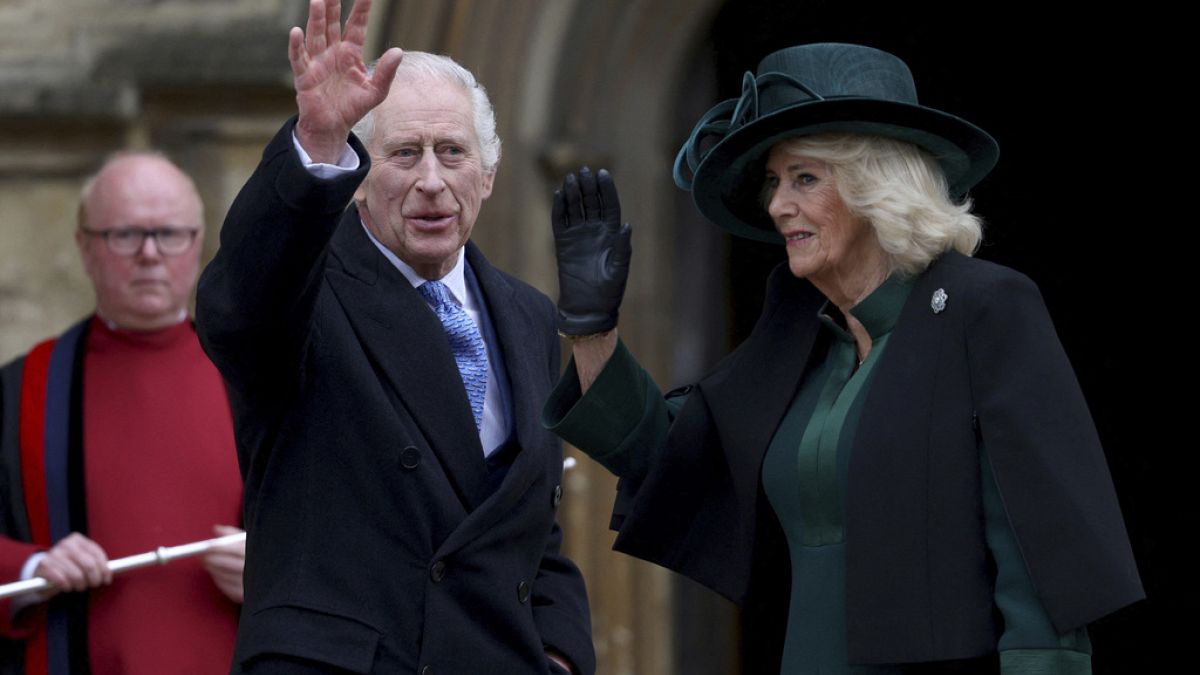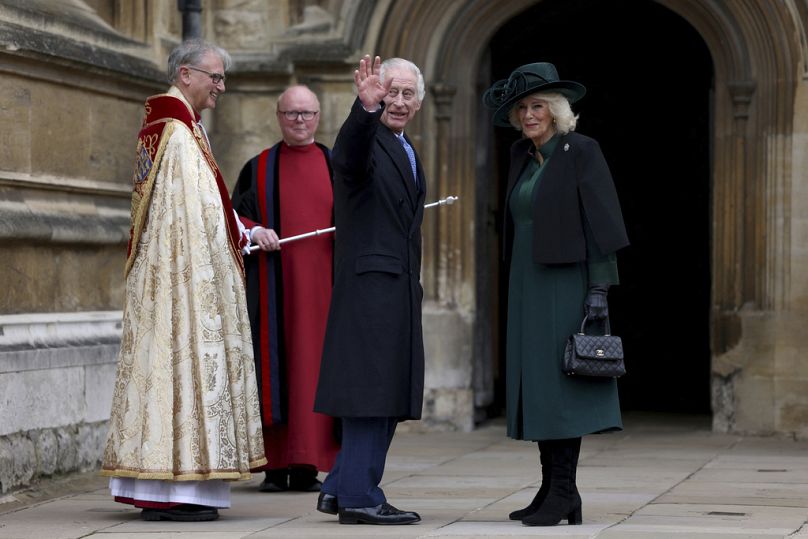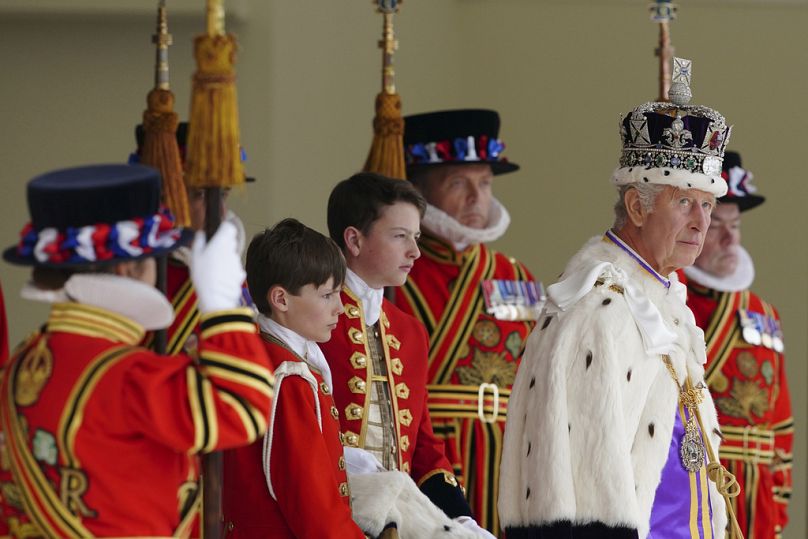The Prince and Princess of Wales did not attend, as Catherine continues her cancer treatment.
Britain's King Charles III joined the queen and other royal family members for an Easter service at Windsor Castle on Sunday.
The monarch offered a cheery wave as he walked into St. George's Chapel for an hour-long service.
The public appearance is the 75-year-old king's most significant since he was diagnosed with an unspecified type of cancer in early February and is seen as an effort to reassure the public after he stepped back from public duties.
Charles has continued fulfilling his state duties, such as reviewing government papers and meeting with the prime minister. But his attendance at a traditional royal event like the Easter service is seen as a sign that he is beginning a managed return to public life.
British media reported last week that Charles would slowly increase his public appearances after Easter.
Catherine, the Princess of Wales' shock announcement that she, too, had cancer was made on March 22, after weeks of speculation about her health and whereabouts following major abdominal surgery in February.
The princess, her husband Prince William and their children did not attend the service.
Charles’ enforced absence from public life has been a setback for a man who is eager to put his stamp on the monarchy after waiting almost 74 years, longer than any previous heir, to become king.
When he succeeded his mother, Queen Elizabeth II, Charles faced the daunting task of demonstrating that the 1000-year-old monarchy remains relevant in a modern nation whose citizens come from all corners of the globe.
After less than two years on the throne, the king is still defining himself with the public as he tries to persuade young people and members of minority communities that the royal family can represent them.
Although the duties of a constitutional monarch are largely ceremonial, the job of being a royal can be exhausting.
Besides the occasional procession in full royal regalia, there are meetings with political leaders, dedication ceremonies and events honouring the accomplishments of British citizens.
That made 161 days of royal engagements during Charles’s first year on the throne.


